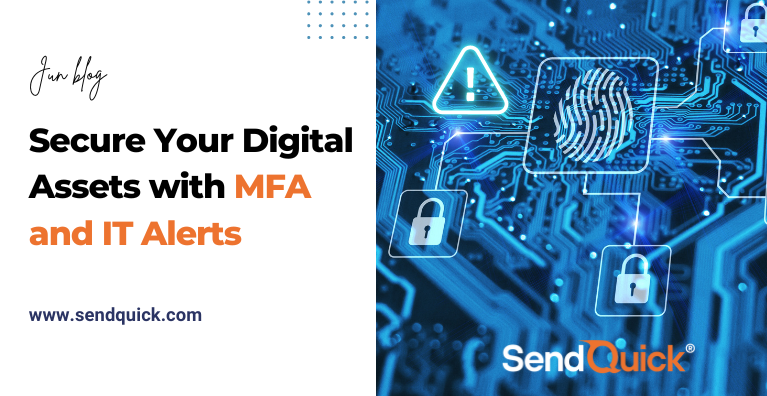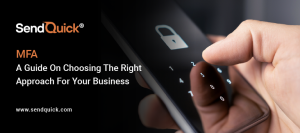In an era where digital assets are constantly under threat from cybercriminals, the need for robust security measures has never been greater. As cyber threats continue to escalate, organizations must implement effective strategies to safeguard their valuable digital assets.
Two key components that play a crucial role in bolstering security are Multi-Factor Authentication (MFA) and IT alerts. In this article, we will explore how the combined power of MFA and IT alerts can provide a strong defense against unauthorized access and potential breaches. Let’s dive in!
Understanding Multi-Factor Authentication (MFA):
Multi-Factor Authentication is a security measure that requires users to provide multiple forms of identification to access their accounts or systems. It typically combines something the user knows (such as a password), something the user possesses (such as a smartphone), and something the user is (such as a fingerprint or facial recognition). By introducing multiple layers of verification, MFA significantly enhances the security posture of an organization.
Strengthening Security with MFA:
Implementing MFA across various access points provides a formidable barrier against unauthorized access. Hackers and cybercriminals face additional hurdles when attempting to breach a system protected by MFA. Even if they manage to obtain a user’s password, they would still need physical possession of the second factor, making unauthorized access highly improbable.
Role of IT Alerts in Security:
IT alerts serve as an early warning system, notifying IT teams about potential security incidents, suspicious activities, or system anomalies. By leveraging a robust IT alerts system, organizations can proactively monitor their digital assets, detect threats, and respond promptly to mitigate risks. Alerts can be configured to trigger notifications when unauthorized access attempts, unusual login patterns, or system vulnerabilities are detected.
Integrating MFA with IT Alerts:
The integration of MFA and IT alerts creates a powerful synergy that strengthens an organization’s security posture. When a user attempts to access a system protected by MFA and triggers an alert, the IT team can promptly investigate the incident and take appropriate action. By receiving real-time notifications, the IT team can detect and respond to potential threats swiftly, minimizing the impact of security incidents.
Benefits of Combined MFA and IT Alerts:
a. Enhanced Security: The combination of MFA and IT alerts provides an additional layer of protection, making it significantly harder for unauthorized individuals to gain access to critical systems and sensitive data.
b. Proactive Threat Detection: IT alerts enable organizations to proactively detect potential security breaches or suspicious activities, allowing them to respond promptly and mitigate risks before they escalate.
c. Quick Incident Response: Real-time alerts empower IT teams to react swiftly to security incidents, reducing the time between detection and remediation and minimizing potential damages.
d. Compliance and Regulatory Requirements: Many industry regulations and standards mandate the use of MFA and proactive security measures. Implementing MFA and IT alerts helps organizations meet compliance requirements and demonstrate a commitment to data protection.
Conclusion:
Securing digital assets is a top priority for organizations across all industries. By implementing Multi-Factor Authentication (MFA) and integrating it with a robust IT alerts system, businesses can significantly fortify their security posture.
The combined power of MFA and IT alerts enhances protection against unauthorized access, enables proactive threat detection, facilitates quick incident response, and ensures compliance with regulatory standards. Embrace these technologies today to safeguard your valuable digital assets and stay one step ahead of evolving cyber threats.
SendQuick MFA solution works with any SSL VPN solutions that has either RADIUS or SAML authentication and has the capability to facilitate Authenticate and Authorise (AA) via Mobile Token, Omnichannel OTP, SMS OTP, email OTP and hard token.
SendQuick IT Alert solution is a comprehensive notification management platform that can easily integrate with any system such as NMS, DCIM, BMS, SIEM, ITMS, SCADA, ERP, CRM to send critical alerts. Our policy filters helps to avoid alerts fatigue and our escalation features ensures no critical alerts is missed. Another stand-out feature is SendQuick’s wide range of channels that notifications can be sent, such as WhatsApp, WeChat, Line, Telegram, Facebook Messenger, Viber, Slack, Microsoft Teams, Cisco Webex on top of the usual automated voice call, email, and SMS.
By combining MFA with IT Alerts, SendQuick offers you the quintessential solution for any IT or network infrastructure department for secure remote access and alert notification.






